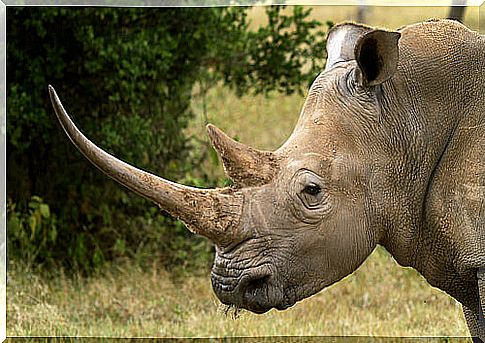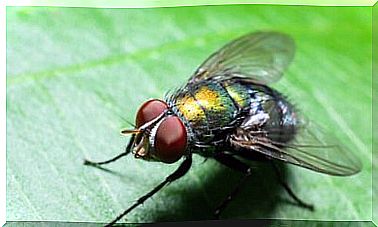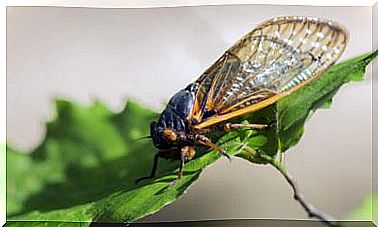Rhinoceros: Behavior And Habitat Characteristics

The rhinoceros is an animal that has always accompanied us in our childhood, having met it through school or on a trip to the zoo. However, because it may not live in our area it is not a species that we know much about. Today we want this to change, for you and for us. Therefore, we are going to take a closer look at this powerful animal.
Everything we need to know about the rhino
The rhinoceros belongs to a family of mammals of which there are five species: white, black, Javanese, Indian and Sumatran. In Spanish they are also known as abbada, a word from Portuguese that has been used to refer to the female rhinoceros, although today it is in disuse.

Rhinoceros characteristics
The word rhinoceros comes from the Greek rhinos -which means nose- and kera -which is horn- and if we translate it literally it would be something like ‘horned nose’. This defines it perfectly, since this animal, whose longevity is about 60 years, undoubtedly counts as the characteristic that best defines it with its horn on its snout.
However, rhinoceros bone is different from other species in that it does not contain a bony core but is made of keratin. Both African species, that is, the white and the black, have two horns, while the Indian and the Javanese have only one. Also, their eyes are located on both sides of the head in the lower part of the horn.
On the other hand, the senses of smell and hearing are very heightened, although his eyesight is quite bad. Its head and body measure between 240 and 315 centimeters, in the case of the white rhino, and from 335 to 420 in the Sumatran. The latter weighs about 800 kilos, while the target can reach 3,600 kilos, making it the second largest land animal in the world.
Rhinos are perissodactyla, which means that they have a longer than normal central finger, which serves as a fulcrum, and two smaller fingers that make their footprint clover-shaped.
Behavior
The rhinoceros is a solitary animal that does not like to interact more than with its mother or her young, and it is that adults only seek association with females in the mating season. In some of the species, such as the white or the Indian, there are exceptions and they form pairs that give rise to larger groups later.
Normally, they always move through the same territory throughout their lives. These can span between three and 90 kilometers, and rhinos mark them with feces and urine to remember the return.
Females have fewer problems with territories and rivalry does not usually arise between them. On the contrary, they tend to touch their noses as a symbol of welcome, less in the case of the Indian rhinoceros that does respond aggressively to an approach to its territory.

The males however, will fight anyone who wants to step on their ground. In these confrontations the same gestures are made over and over again until one of the two gives up.
The fights are light because they do not usually attack each other, but they push each other with their horns so that the other gives up. If the winner were the intruder, the ‘owner’ of the territory would stop marking it with his urine and feces and would take the position of subordinate.
Rhino habitat
The rhinoceros is very versatile when it comes to habitat. It can live between savannas or forests, whether tropical or subtropical. What should be in the area for them to live is water and a lot of food, since both are very necessary in large quantities for their survival.
The white and the black live mostly in the savannas, plains or forests, while the Javanese inhabits tropical forests and the Indian in areas of tall grass very close to rivers.
Did you like to know more about this imposing animal?
It might interest you …
Main image source: Valentina Storti









